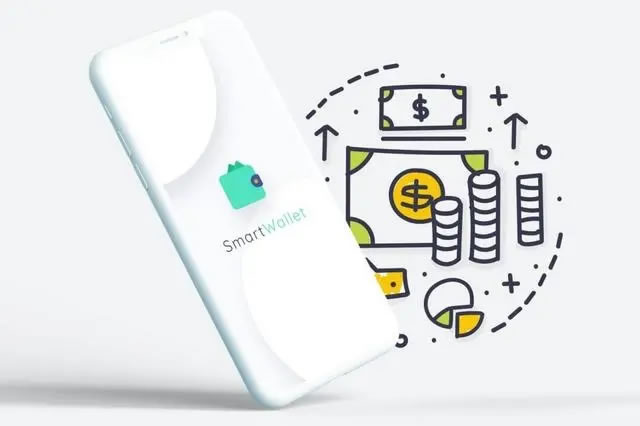Speaking of Bitcoin, the concept of hash value will inevitably come to mind, but there are still many novices who don’t understand what the hash value of virtual currency is? Simply put, a hash value is a string composed of a series of character characteristics. It is usually used to verify the integrity and security of data. It is the so-called hash function that transforms input data into a fixed-length output. The hash value is a one-way function and the original data cannot be deduced from the hash value in reverse. Therefore, hash values are widely used in digital signatures, cryptography technology, information security and other fields. Next, the editor will tell you in detail.

The hash value of a virtual currency is a fixed-length string of numbers or letters calculated by a hash function and used to uniquely identify a specific transaction, block or data. Hash values are generated by algorithmically transforming input data into fixed-length output data. Common hash functions include SHA-256 (Secure Hash Algorithm 256-bit), SHA-3, RIPEMD-160, etc. The specific hash function chosen depends on the cryptocurrency protocol and project involved.
In the field of blockchain and cryptocurrency, hash values are commonly used in the following four:
1. Transaction identification:
Each transaction will generate a unique hash value Hash value, which is obtained by hashing the transaction data. This unique identifier helps ensure that transactions are unique and immutable in the blockchain.
2. Block identification:
Each block contains a hash value, which is usually calculated by performing a hash calculation on the information in the block header. This information includes the hash value of the previous block, transaction information, timestamp, etc. The hash of a block is critical to maintaining order and integrity in the blockchain.
3. Public key and address:
In cryptocurrency, public keys and addresses are usually generated through hashing algorithms. By hashing a public key or address, a short length identifier can be obtained, improving security and privacy protection.
4. Digital signature:
Digital signature also involves the calculation of hash value. Digital signatures are techniques used to verify data integrity and identity authentication, where hash values are used to generate signatures.

The hash algorithm is a method of converting arbitrary length An algorithm for converting data into fixed-length values. The main idea is to pass the input data through a series of calculations and transformations to generate a unique binary string, that is, a hash value. This hash value is usually a fixed-length string that can be used to represent the state or characteristics of the original data. Hash algorithms are widely used, including data encryption, digital signatures, data integrity verification, etc.
The principle of the hash algorithm is very simple. It mainly includes the following steps:
1. Process the input data into blocks:
The hash algorithm usually divides the input data into Divided into fixed-size blocks, each block is typically 512 or 1024 bits long.
2. Initialize hash value:
The hash algorithm will initialize a hash value for each input block, usually some constant or random value.
3. Perform hash operation:
The hash algorithm gradually updates the hash value of each input block through a series of calculations and transformations. These calculations and transformations usually include bit operations, XOR operations, addition, multiplication, permutation, etc.
4. Output hash value:
When the hash values of all input blocks are updated, the hash algorithm outputs the final hash value. This hash value is usually a fixed-length string, usually 128, 256 or 512 bits.

In the cryptocurrency system, the public key address is originally an address obtained by a 256-digit private key password through a series of encryption operations. In order to display this public key address more conveniently, you need to use The hashing algorithm reduces it to 26-40 characters.
The main reasons for using a hash algorithm to encrypt a wallet address are as follows:
1. Irreversibility:
The hash value generated by the hash algorithm is irreversible. This means that the address can only be controlled through the private key, and the public and private keys cannot be restored through the hash value. This irreversibility guarantees the security and privacy of cryptocurrency wallet addresses.
2. Uniqueness:
The hash value generated by the hash algorithm is unique. Even if the wallet address only changes slightly, the hash value generated will be completely different. This uniqueness ensures the uniqueness of each wallet address and prevents address conflicts and duplication.
3. Efficiency:
The calculation speed of the hash algorithm is very fast. Even if a large amount of data is hashed, the result can be obtained in a short time. This efficiency ensures the speed of transaction processing in cryptocurrency systems.
4. Security:
Hash algorithm can improve security by adjusting the parameters of the hash algorithm. For example, the SHA-256 hashing algorithm used in Bitcoin is an adjusted version that ensures its resistance to brute force attacks. This security ensures that the cryptocurrency system is tamper-proof and resistant to attacks.
Blockchain is a distributed ledger technology based on hash algorithm. The application of hash algorithm in blockchain mainly includes the following aspects:
1. Blockchain data structure:
The data structure of blockchain mainly consists of blocks and transactions . Each block contains a hash value, which is usually calculated from various fields in the block header. This hash value can be used to uniquely identify a block and ensure the immutability of the blockchain.
2. Proof of Work:
Proof of Work is a technology used to prevent malicious behavior in blockchain networks. The main idea is to prove their contribution to the blockchain by letting nodes perform calculations. In Bitcoin, the calculation process of proof of work is to use the hash algorithm to find a specific hash value that meets certain difficulty requirements.
3. Digital signature:
Digital signature is an important technology in the blockchain to ensure transaction security. Each transaction contains a hash value, which is typically calculated from the various fields of the transaction. During the transaction verification process, the node will use the public key to verify the correctness of the digital signature to ensure the authenticity and integrity of the transaction.
4. Merkle tree:
The Merkle tree is a data structure used to efficiently verify transactions. The main idea is to group transactions, each group contains multiple transactions, and then perform a hash operation on each group. Finally, the hash values of all groups are hashed again to obtain the root hash value. By verifying the root hash value, you can quickly check whether the transaction has been tampered with.
5. Distributed storage:
The data in the blockchain is distributed and stored on multiple nodes in the network. Hash algorithms can be used to determine the storage location of data, thereby ensuring the reliability and security of the data.
The transaction hash value can be queried in the block browser. Different digital currencies have different block browsers. The following 6 common browsers can query the transaction hash value:
BlockchainExplorer is a tool that allows users to view encrypted digital currency blockchain information. It is a tool similar to an internet browser, but its task is to provide users with blockchain data instead of browsing the web. Just as ordinary users use an Internet browser to view web pages, users can use a blockchain browser to view digital currency transaction records, view address balances, and search other blockchain data.
The Aptos browser supports switching between 12 languages including Chinese, English, and Traditional, bringing smooth, accurate, real-time, and rich data and indicator services on the Aptos chain to Aptos ecological users. It is the world's first multi-chain browser connected to the main network "AptosAutum". According to the person in charge of the OKLink multi-chain browser, OKLink’s official website has included 100 Aptos ecological projects. It will continue to follow up and support the Aptos ecosystem in the future. By collecting information such as audit reports and address labels, it will disclose security information to avoid users Falling into the project trap. According to statistics, OKLink multi-chain browser currently supports 20 mainstream public chains and 10,000 data indicators.
TRONSCAN is the first blockchain browser based on TRON. Users can use it to easily find, confirm and verify events on the TRON blockchain. transaction. In addition, TRONSCAN not only includes some basic functions of a blockchain browser, such as searching and querying transactions, accounts, blocks, nodes, smart contracts, on-chain data statistics and queries, but also directly supports Token creation, contract deployment, voting and other functions. .
Etherscan is the leading blockchain browser, search, API and analysis platform for Ethereum, a decentralized smart contract platform. Built and launched in 2015, it is one of the earliest and longest-running independent projects built around Ethereum and its community, with the mission of providing fair access to blockchain data. Moonscan brings the most widely used EVM compatible block explorer to Moonriver and Moonbeam.
BscScan is a blockchain browser and belongs to the same development team as Etherscan. It provides an analysis platform for Binance Smart Chain and has many convenient functions. If you want to continue to pay attention to DeFi projects in BSC, this platform is an excellent source of information. BscScan also has the following functions: view transactions and transaction progress, view the latest blocks added to the blockchain, view wallet balances and transaction history, search, browse and interact with smart contracts deployed in the blockchain, and research The supply of the token versus other cryptocurrencies.
SolScan is a blockchain browser used to search information on the Solana blockchain. It is a popular alternative to the official Solana browser. SolScan transforms complex transaction data into easy-to-read content. Users can access everything recorded on the chain through this block explorer, including cryptocurrency transactions, addresses, smart contracts, blocks, tokens, and more. It's free to use and doesn't require an account, but you can create one and log in to take advantage of enhanced features.
The above is the detailed content of What is the hash value of a virtual currency? Where can I check the hash value of virtual currency?. For more information, please follow other related articles on the PHP Chinese website!




